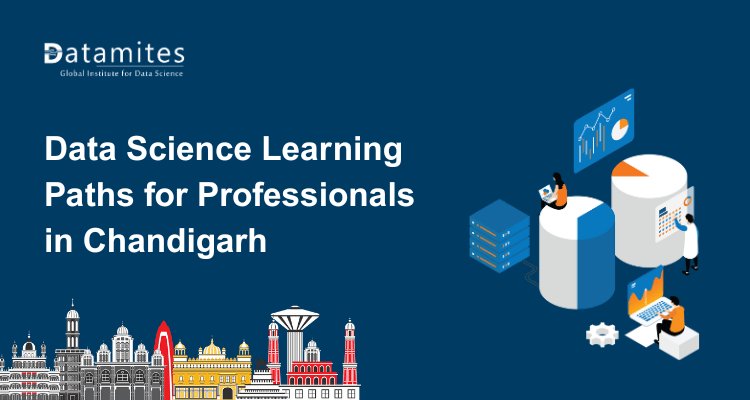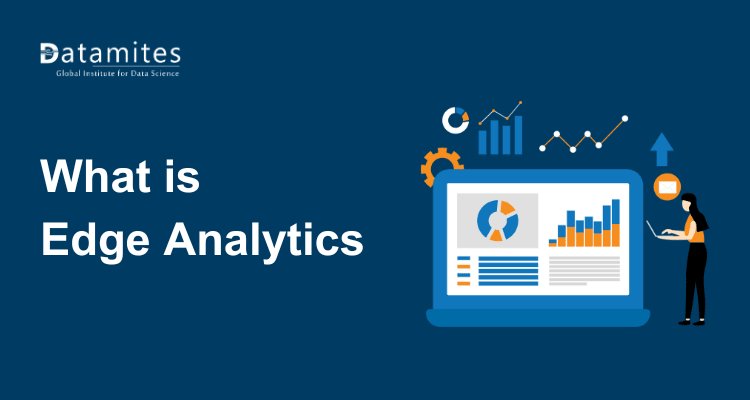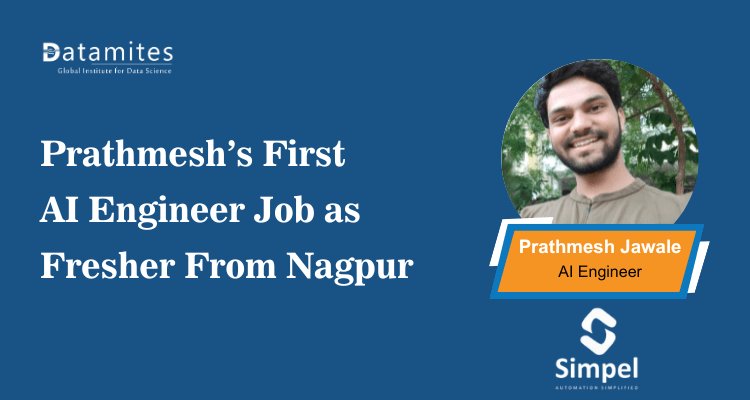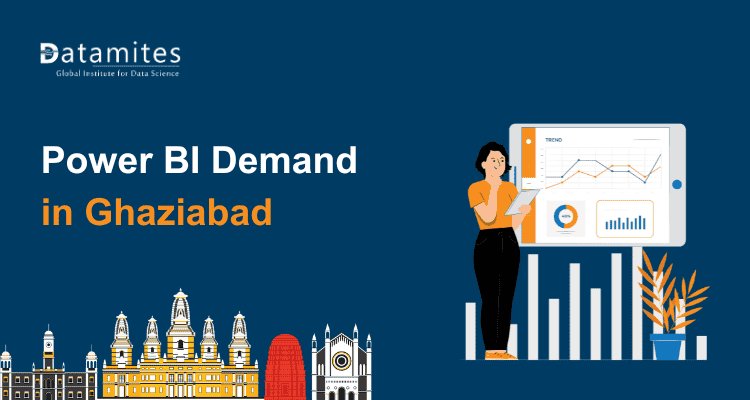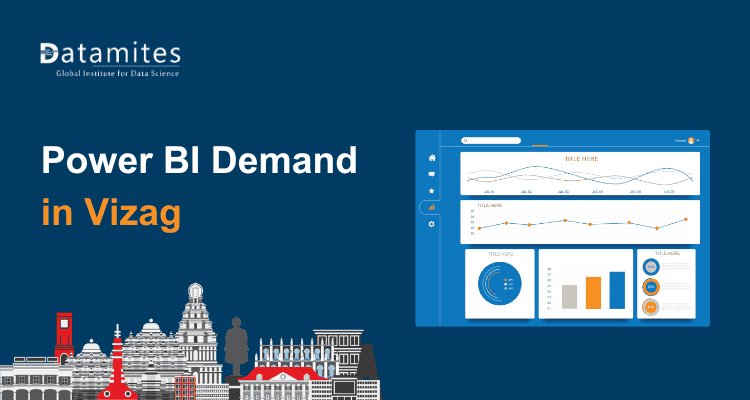Understanding Autocorrelation Function in Data Science
Autocorrelation measures how data points in a series relate to past values, helping detect patterns, trends, and seasonality in time series analysis.
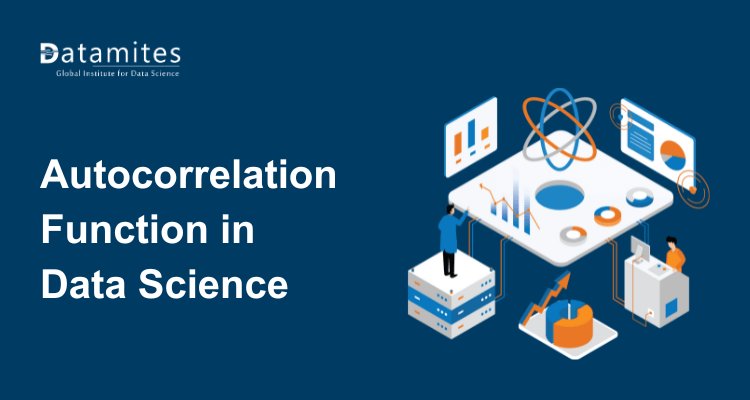
When working with time-dependent data, the real challenge isn’t just collecting numbers it’s figuring out how past values influence future ones. That’s where the Autocorrelation Function (ACF) comes in. It’s a tool that lets you see the hidden rhythms in your data, revealing patterns that can make your predictions far more reliable.
Simply put, autocorrelation measures how related a data point is to its previous values over time. Whether it’s predicting stock prices, analyzing temperature changes, or forecasting sales trends, autocorrelation in Data Science plays a vital role in uncovering repetitive behaviors and trends in data.
In today’s data-driven economy, learning fundamental statistical concepts in Data Science like the Autocorrelation Function helps professionals build better forecasting models and make data-backed business decisions. For anyone aiming to build a career in Data Science, mastering concepts like ACF provides a solid foundation in understanding how time-related data behaves an essential skill for analysts, data scientists, and AI professionals.
What is Autocorrelation in Data Science?
To understand autocorrelation in Data Science, imagine you’re observing daily temperatures. If today is hot, chances are tomorrow might also be hot because temperature tends to have a relationship over time. This relationship between current and previous values of the same variable is called autocorrelation.
In simple terms, autocorrelation shows whether past events influence future outcomes in a dataset. For instance, if the sales of an ice cream shop rise every weekend, that repeating pattern reflects positive autocorrelation. If there’s no consistent relationship between days, we have no autocorrelation.
The Autocorrelation Function (ACF) is a statistical tool that quantifies this relationship it measures how correlated a time series is with its own past values. In Data Science, ACF helps analysts understand the internal structure of time series data before building predictive models.
By analyzing ACF, one can identify seasonal trends, periodic patterns, or even irregularities in data all of which are essential for accurate forecasting and decision-making.
Why is Autocorrelation Important in Data Science?
Autocorrelation is one of the most fundamental data science concepts used for analyzing time series in Data Science. Understanding it allows professionals to:
1. Identify Trends and Patterns
Data often follows cycles daily, weekly, monthly, or seasonal. By studying autocorrelation in Data Science, we can detect these trends, such as recurring demand patterns in retail or energy consumption peaks at certain times.
2. Enhance Forecasting Models
In machine learning and predictive analytics, the accuracy of models depends on recognizing dependencies between observations. Using ACF helps determine whether past data points should be included as features in forecasting models.
3. Improve Business Insights
Companies rely heavily on data science applications like demand forecasting, financial modeling, and risk assessment. Understanding the autocorrelation structure helps analysts build smarter models that align with real-world behaviors.
4. Optimize Machine Learning Models
In autocorrelation in machine learning, the ACF helps detect if model residuals (errors) are independent. If they’re not, it signals that the model might be missing key information prompting data scientists to adjust their approach.
Real-World Examples:
- Weather Prediction: Temperatures on consecutive days are strongly correlated.
- Stock Market Analysis: Historical price movements help forecast short-term trends.
- Sales Forecasting: Weekly or seasonal purchase patterns are captured using ACF.
These examples highlight how autocorrelation in Data Science acts as a bridge between data understanding and accurate forecasting.
Refer to these articles:
- Bias-Variance Tradeoff: Key Concept in Data Science Models
- Binomial Distribution: A Beginner’s Guide for Data Science
- Box Plot in Data Science: How to Visualize Data Spread
Understanding the Autocorrelation Function (ACF)
The Autocorrelation Function (ACF) is a powerful tool in Data Science that helps you measure how data points in a time series are related to their past values. Think of it as a way to ask, “How similar is today’s data to what happened yesterday, last week, or last month?”
Key Concepts of ACF
Lag:
- A “lag” refers to how far back you are comparing the data.
- For example, lag 1 compares today’s value with yesterday’s, lag 2 with the day before yesterday, and so on.
Positive vs. Negative Correlation:
- Positive correlation at a lag means the values tend to move in the same direction. For instance, if high sales this month usually follow high sales last month, the correlation is positive.
- Negative correlation means the values move in opposite directions. For example, a hot day might lead to fewer store visits the next day, showing negative correlation.
Interpreting ACF Values:
- A value close to 1 indicates a strong positive relationship.
- A value close to -1 indicates a strong negative relationship.
- A value around 0 suggests little or no correlation.
Decay Patterns:
- Gradual decay of ACF values often indicates trends in the data, such as steadily increasing sales.
- Sudden drops in ACF values may suggest the data is stationary, with no long-term trend.
Simple Example of Autocorrelation
Imagine tracking weekly website traffic. If the number of visitors this week is often similar to the previous week, the ACF at lag 1 will show a high positive correlation. Multiple lags can reveal repeating patterns, such as higher traffic on weekends or seasonal spikes during holidays.
Simple Bakery Example with Table
| Day | Sales | Sales 7 Days Ago | Correlation |
| Monday | 200 | 200 | Moderate |
| Tuesday | 210 | 210 | Moderate |
| Saturday | 500 | 500 | High |
| Sunday | 520 | 520 | High |
Observation: Weekend sales repeat weekly, showing strong positive autocorrelation at a lag of 7 days. Using ACF, the bakery can forecast busy weekends, manage inventory efficiently, and plan staffing effectively.
Refer to these articles:
- A Beginner’s Guide to Linear Programming for Data Science
- Why Management and Commerce Graduates Choose Data Science
- Why Cloud Computing Skills Are Important for Data Scientists
Applications of Autocorrelation in Data Science
Autocorrelation is widely used across industries and data-driven disciplines. Below are some key applications of autocorrelation in Data Science:
Time Series Analysis
- Identifies patterns, cycles, and trends in time-based data.
- Forms the foundation for ARIMA and other forecasting models.
Feature Selection for Predictive Models
- Determines which past data points (lags) should be used as features.
- Helps build efficient and interpretable forecasting models.
Error Detection in Forecasting
- Checks whether model errors are truly random or still correlated.
- Ensures that predictive models are statistically sound.
Data Smoothing and Trend Analysis
- Filters out noise and highlights long-term patterns.
- Useful in economics, healthcare analytics, and financial planning.
Visualizing Autocorrelation in Data Science
ACF plots display correlation values at different lags, helping analysts detect trends, cycles, or randomness visually.
- Python: Use statsmodels or pandas libraries
- R Programming: Built-in functions for time series analysis
- Excel: Manual calculation of correlations across lags
These visualizations help Data Science beginners see how historical data impacts future values a key insight for decision-making.
Refer to these articles:
The Growing Demand for Data Science Skills
The demand for Data Science professionals continues to grow as organizations increasingly rely on data forecasting. According to recent reports, the Data Science job market is projected to expand by over 35% in the coming decade. In parallel, the data science platform market is expected to grow from USD 111.23 billion in 2025 to USD 275.67 billion by 2030, registering a compound annual growth rate (CAGR) of 21.43%, according to Mordor Intelligence.
With this surge, mastering core topics like Autocorrelation Function in Data Science and time series forecasting enhances employability and helps learners become capable of handling real-world analytics challenges. Building a career in Data Science requires not just technical know-how but also an understanding of statistical reasoning. Concepts like ACF enable professionals to interpret trends, validate models, and improve predictions essential skills in modern analytics.
Mastering the concept of Autocorrelation Function in Data Science is essential for anyone venturing into time series analysis and forecasting. It equips you with the tools to uncover hidden patterns, make informed predictions, and build robust models. Whether you're a beginner exploring the field or a professional enhancing your skills, understanding ACF is a stepping stone towards becoming proficient in data science.
For those looking to deepen their knowledge, enrolling in Data Science training programs or Data Science courses can provide structured learning and hands-on experience, helping you practice these concepts effectively.
In the ever-evolving field of data science, staying updated with concepts like autocorrelation ensures that you are well-prepared to tackle real-world challenges and leverage opportunities in this dynamic domain.
Kickstart your Data Science journey today and acquire the skills that top industries are actively looking for. Enrolling in data science training in Mumbai, Hyderabad, Pune, Ahmedabad, Bangalore, Chennai, Coimbatore, or Delhi can equip you with practical knowledge, hands-on project experience, and professional career guidance preparing you to confidently step into this rapidly growing field. With the soaring demand for data science professionals, the right training can unlock a wide range of rewarding career opportunities.
Among the front-runners in Data Science education, DataMites Institute stands out with its industry-focused curriculum and emphasis on experiential learning. Through live projects, internship opportunities, and dedicated placement support, DataMites ensures learners gain real-world exposure while bridging the gap between classroom concepts and practical application.
The Certified Data Scientist course at DataMites, accredited by IABAC and NASSCOM FutureSkills, covers essential tools, machine learning workflows, and advanced analytics skills that are highly sought after across sectors like finance, healthcare, and more. For those who prefer offline learning, DataMites offers data science courses in Coimbatore, Pune, Chennai, Mumbai, Bangalore, Hyderabad, and Ahmedabad. Learners seeking flexibility can opt for online courses, which deliver the same high-quality education to students worldwide.

